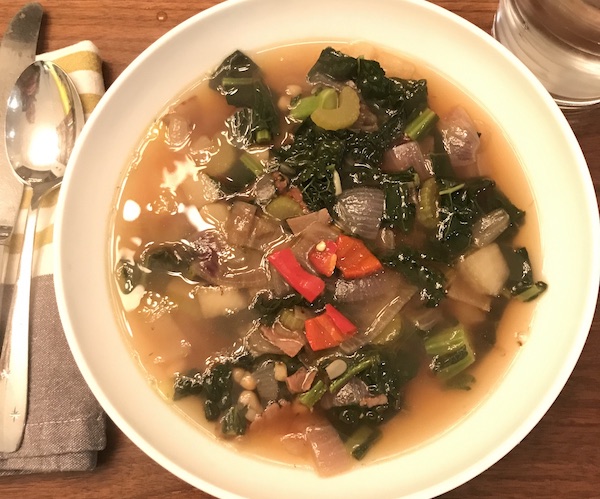By Jamie Drummond

Fifth Town's selection of Cheese
Last week I found myself once again at Fifth Town Cheese in Prince Edward County. Upon my previous visit I had taken on the role of “Cheesemaker for a day” spending a most enjoyable day learning about the production of various styles of cheese clad in a pair of white wellies and a hair net. Not JUST white wellies and a hairnet mind (see pics below)… Check the Fifth Town website for upcoming “Cheesemaker for a day” events.

Your intrepid reporter in his chesemaking duds
Although I desperately wanted to don the Cheesemaker outfit once again, this time I was at Fifth Town to learn a little more about their move into making cheeses from cow’s milk. When I asked Fifth Town’s Petra Cooper (below) the reasoning behind this new development she explained that milk from both ewes and goats is basically very much seasonal, with sheep only milking from March through November. Goat milk is also seasonal, but producers can actually generate milk year round by staggering the breeding process. According to Petra, unlike goats, sheep don’t take to kindly to being told when to get it on. As Fifth Town require their farms to be LFP (Local Food Plus) certified, this means that they cannot use “sponging” (I wonder how that feels?) and other methods to induce a doe into heat, and hence Fifth Town have very little milk from November until March.

Fifth Town's Petra Cooper
This is where the cow’s milk from a farm just down the road comes in, as it allows Fifth Town to make new cheese in those shoulder months, leading to better utilisation of the facility coupled with staff being able to work there all year round and not just seasonally. Petra goes on to mention that she could have decided to bring in more goat milk from a number of co-operatives that have a glut of milk they would be more than happy to sell to Fifth Town in the winter months. However she is firm in her commitment to using only local milk drawn from farms within a 100km radius, pointing to a recent customer survey which showed that local sourcing of milk was of paramount significance in the minds of her customers when choosing Fifth Town cheeses.

Cheesemaker Drummond replete with white wellies
When it comes to cow’s milk, as a processor Fifth Town have to apply for a plant quota and not a producer quota. This entailed Petra applying and then making a presentation to a committee comprised of other processors in Ottawa. From this she was given the okay to process 100, 000 litres of cow’s milk a year. To put this into perspective, that is only five of those large milk trucks that one sees on the road, and throughout the winter Fifth Town will be taking only 1,500 litres of fresh moo juice each month.

Chef Jamie Kennedy lends a hand in a rather fetching cap
Cow’s milk varies quite dramatically in composition from that of ewes and goats, with very different proportions of fat, protein, lactose and other solids. Cow’s milk also varies in start-up acidity, with goat milk being more acidic to start with than that of the cow. Also, the molecular structure of cow’s milk is drastically different, with cow’s milk bonds being quite strong, sheep milk being stronger still, and goats milk having the weakest. This is the reason one can make cheese from frozen sheep milk (one cannot with the frozen milk of cows or goats.) Petra speaks of goat milk’s structure as being very lacy and delicate, stating that it cannot be aggressively pumped and always needs to be handled extremely carefully. Cow and sheep milk, on the other hand, are much more robust.

Cheesemaker Melon squishes the curd
Interestingly, due to 30 – 40 years of research and development spending and the investment in cow dairy farmer training and testing, the plate counts for cow’s milk are normally well under 5000, whereas in sheep and goat it can be extremely high, mostly due to hygiene issues and farm management practices. According to Petra, goat and sheep milk quality still has a long way to go within Ontario.
Another difference is that cow’s milk contains carotene whereas goat and sheep milk do not, and so cow’s milk does taste a little different to that of goat and sheep, both on the tongue and in mouthfeel. Goat milk is also naturally homogenised, meaning that its fat globules are much smaller than those of sheep or goat. Goat milk, because of its molecular structure, differing animal protiens and lacy character is often seen as easier to digest than cow or sheep. Petra notes that it is important to understand that ALL mammal milk contains lactose as milk is designed to feed offspring and let’s not forget that lactose is a sugar. People who profess to be lactose intolerant and yet have no issues with goat milk are more likely intolerant to cow proteins. Any cheese aged for over 60 days (cow, goat or sheep) generally no longer have lactose present due to bacteria eating up the milk sugar to survive. When the lactose has been gobbled up, the bacteria die, leaving enzymes which break down protein chains throughout the aging process, resulting in the many complex flavours that we all love in aged cheeses

Do you think that this is good look for me?
Presently Fifth Town have only obtained permission to make their Quinte Crest cheese from their cow’s milk allocation. This is a natural rind Tomme style cheese that is quite delicious to this palate. Petra is currently applying for permission to make the Rose Haus, a phenomenal washed rind cheese, that she hopes to release at the end of April. As if you needed another reason to seek this cheese out, Fifth Town are donating 10% of all Rose Haus sales to Prince Edward County’s Rose House Museum, who will be featuring the history of local dairying in the region.
I guess that now you are all asking just where you can find these great new cheeses… Over to Petra:
“We have not released either cheese yet commercially except for some taste tests in stores and select restaurants (Auberge du Pommier has a special, pilot version of Rose Haus being finished in Calvados at their request!). The Quinte Crest needs more aging time (at least 3-6 months) and we cannot really start selling Rose Haus until we have approval. But we are allowed to “pilot”. So customers can buy them in our store, and we are introducing the cheese at a variety of events for time being.”

A sneak preview of the new Rose Haus cheese
Edinburgh-born/Toronto-based Sommelier, consultant, writer, judge, and educator Jamie Drummond is the Director of Programs/Editor of Good Food Revolution… and he is in love with the bouquet of the new Rose Haus cheese.







An great piece that actually taught me a number of technical details, without hurting my head!
Must get out to the other side of the County once in a while.
Nice piece Jamie
(photos all from the earlier visit?)